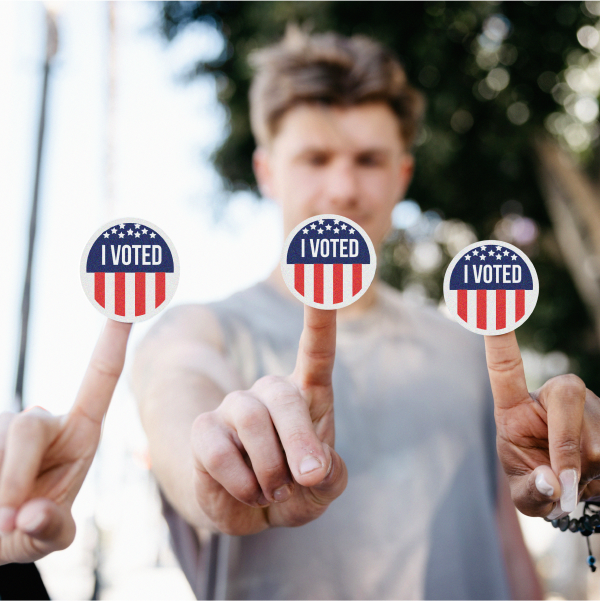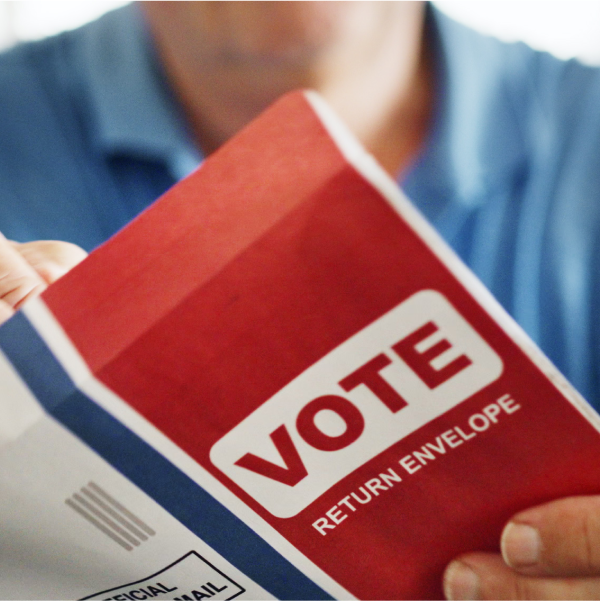September 3, 2025

The science of touch: Why physical channels create deeper voter connections
Digital channels are often the go-to for campaigns to generate clicks and quick impressions. However, digital impressions are short-lived and don’t always generate those deeper responses with voters that can build long-term connections.
So how can your campaign dig deeper to engage your constituents? By forming stronger neurological connections with direct mail.
Fact: When voters engage with direct mail, they experience the science of touch, also called “haptics.” These experiences can activate deep, neurological responses that influence behavior that other channels, like digital, cannot replicate.1 And that’s not all—physical media is often easier to process than digital and can generate stronger emotional responses and lead to better memory retention.1
This is why direct mail is such a powerful medium to connect with voters.
The science behind tactile experiences and how they trigger cognitive responses in the brain.
Physically touching a piece of mail can actually heighten a voter’s attention. This is true because of two reasons:
1. “Solus attention” refers to the activity of reading hardcopy text that makes it less possible to be doing something else. Research shows that the solus attention commanded by mail is high, which speaks to its strength to deliver messages unaffected by background noise.2
Fact: 66% of surveyed voters are likely to read campaign mail upon receiving it.3
2. When people touch and interact with physical channels, like direct mail, a region of the brain, known as the “somatosensory cortex,” triggers deep neurological responses vs. those evoked from purely visual stimuli, like digital ads.1
Fact: Studies have found that simply touching an object enhances the perceived value, making mail recipients more emotionally invested. This is important because emotional responses formed from mail are often tied to memory recall, decision-making, and brand loyalty.1
What voters are saying:
“I think mailers are preferable to me because it makes you stop and look at it and go, I’ll give it a little bit more thought here.” 4
Takeaway:
Direct mail enables voters to form strong emotional connections with political campaigns since it activates a sense of touch, allowing them to process information more deeply and improve memory recall that can help inform decisions.
Direct mail also helps increase impressions because it is more accessible in a voter’s home.
Because direct mail has a longer shelf-life than digital, it allows voters to respond more frequently and purposefully, especially when it stays within their physical environment.
Fact: 75% of surveyed recipients say they will keep mail to use later.1
Types of actions voters take after reading mail include:
-
Fact checking claims on the internet (55%) and following the race more closely (54%).3
-
Discussing the race with a friend or family member (56%).3
-
Using mail to compare a candidate against their opponents (49%).3
-
Putting it on the refrigerator or elsewhere in the home (30%).3
What voters are saying:
“I have more time to digest and verify the information on hand with mail.” 4
Takeaway:
When voters keep campaign mail in their physical environment, they tend to engage with it more frequently and intentionally, creating stronger impressions that help inform their decisions and prompt them to take action.
The bottom line:
By integrating direct mail into your media strategy, your campaign can connect online and offline interactions—empowering you to create memorable, immersive, omni-channel experiences that leverage physicality to form neurological connections that leave a long-lasting impression and drive voters to act.


